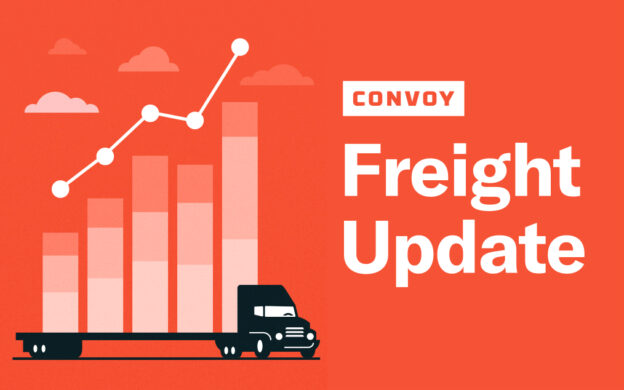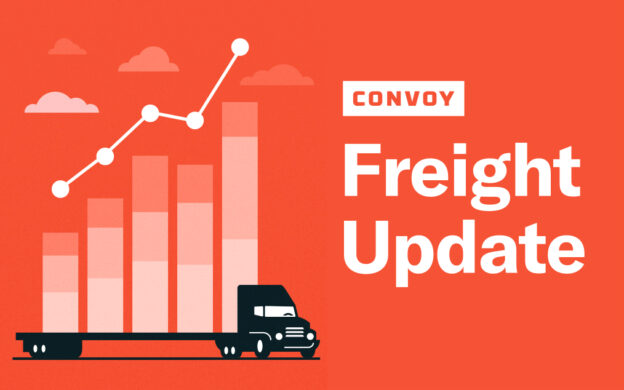COVID-19 Freight Update: What Jobs Report Data Tell Us About Trucking
Freight Research • Published on April 2, 2020
Friday morning the United States will get its first comprehensive look at how the labor market is faring amid the turmoil of the COVID-19 pandemic when the Department of Labor publishes the March Employment Situation report, commonly known as the “Jobs Report”.
Today we’re sharing the fourth of our twice weekly video series covering the ongoing coronavirus crisis and its impacts on freight and trucking. Ari Bixhorn, Head of Shipper Marketing interviews Aaron Terrazas, Director of Economic Research, to learn what the Jobs Report and rising unemployment figures mean for the supply chain industry.
There are some important cautions to keep in mind when interpreting the results of the Jobs Report — particularly with respect to the freight industry. In this video, we discuss when the BLS trucking jobs numbers might tell us, and more importantly, what they won’t.
Subscribe to Freight Economics Updates to get the latest developments delivered directly to your inbox.
Convoy provides shippers reliable, flexible, and instant capacity when they need it most. Learn more about shipping with Convoy today.
View our economic commentary disclaimer here.

You can read the a transcript of the conversation below:
Ari Bixhorn: Hey, everyone. Welcome to Convoy’s ongoing analysis of the freight market during the COVID-19 crisis. We are recording this video on the night of Wednesday, April 1st. I’m Ari Bixhorn and I’m joined today by Aaron Terrazas, our director of economic research at Convoy. Aaron, good to see you.
Aaron Terrazas: Good to see you too, Ari.
Ari Bixhorn: So Aaron, we are now just about a month into this crisis. This Friday the Department of Labor is going to publish its March Jobs Report. That’ll give us the most complete look to date at how our labor market is weathering this outbreak. The Jobs Report is something that anyone who tracks the economy is watching. What do you think we’re going to see? What do you think the report will tell us about the state of the American economy and also specifically about the freight industry?
Aaron Terrazas: You’re right. In normal times the Jobs Report is the most important piece of data that the market’s watch that anyone who’s watching the economy is looking at. Of course, we care about jobs because that is what enables consumer spending, which in turn fuels business investment and all of that is what drives the freight industry.
Now, usually the Jobs Report is the first piece of official data that we get on the state of the economy, but right now things are moving so quickly that in some ways it’s not necessarily going to capture everything that’s happened. The data, for the most part, were collected during the second week of March and we know that that was a lifetime away given the speed that things are moving.
Remember that to show up as unemployed in the jobs report, two things need to happen. One, you kind of can’t be working, but then the second, you need to have been actively searching for employment for the past four weeks. This crisis has come about so quickly that that’s probably not going to be the case for most of the people who have lost their jobs or been temporarily furloughed over the past couple of weeks.
We saw that big spike in unemployment insurance claims over the past two weeks. That is really the first indicator of what’s shifting in the labor market. As we shift into the coming weeks, I think it’s going to be more important to watch continuing claims and that’s when someone already has filed for employment insurance and continues to file again because they still haven’t found jobs. The earliest signals to the depth of this crisis is going to come from continuing claims, people who have lost their jobs and can’t find new ones.
Ari Bixhorn: And then how does this impact the freight industry specifically? I know that the jobs report includes a number for jobs in truck transportation. How should we interpret that data?
Aaron Terrazas: There are some cautions necessary in interpreting that data. First and foremost, the jobs report only covers W-2 employment and remember that in the trucking industry there is this big portion of independent drivers who are 1099 independent contractors or independent owner operators, so they’re not covered in that truck transportation category.
A second complication is that when you look at what the truck transportation category covers: It’s only businesses involved in truck transportation. And remember, only about 30% of people who actually are out there driving a truck work for a business whose business is truck transportation. There are a lot of drivers who work for a business whose primary business is things like food and beverage manufacturing or grocery or restaurant service. There are, again, this big portion of what some of those private fleet drivers who aren’t counted in that number. Some of those private fleet drivers right now may be experiencing a lot of demand, again, if they’re working in grocery. Others, private fleet drivers, if they’re working in a different industry that’s adversely affected, may not be experiencing that strong level of demand.
Ari Bixhorn: So if we look at just trucking employment, that was soft even before the crisis began. Do you think that the situation that we’re in right now is going to push some trucking companies over the edge?
Aaron Terrazas: You’re right. I think about two weeks ago, we showed a chart showing jobless claims in the truck transportation industry. That has been rising for over a year now. If you look at overall employment in truck transportation, it’s kind of been flat, if not contracting over the past year and a half. So that’s different from the rest of the economy and I think if you look at how this is likely to evolve, the reality is the trucking industry has experienced a period of softness for much of the past year. We already have seen layoffs and contraction. So in some ways the trucking industry is more prepared than other sectors. There have already been kind of the exit of those less viable carriers.
If you look to the weeks ahead, I think there’s still clearly a lot of demand for trucking services. So if there are any bankruptcies or closures of trucking companies, the reality is right now there is an enormous amount of demand for trucking services. Question is how long that lasts.
Ari Bixhorn: All right. Well, Aaron, thank you as always for your time and your analysis and everyone tuning in, thank you for watching. We will continue to provide regular updates on coronavirus and the freight industry. Subscribe to our YouTube channel and the Convoy blog to stay informed. We’ll see you next time.


